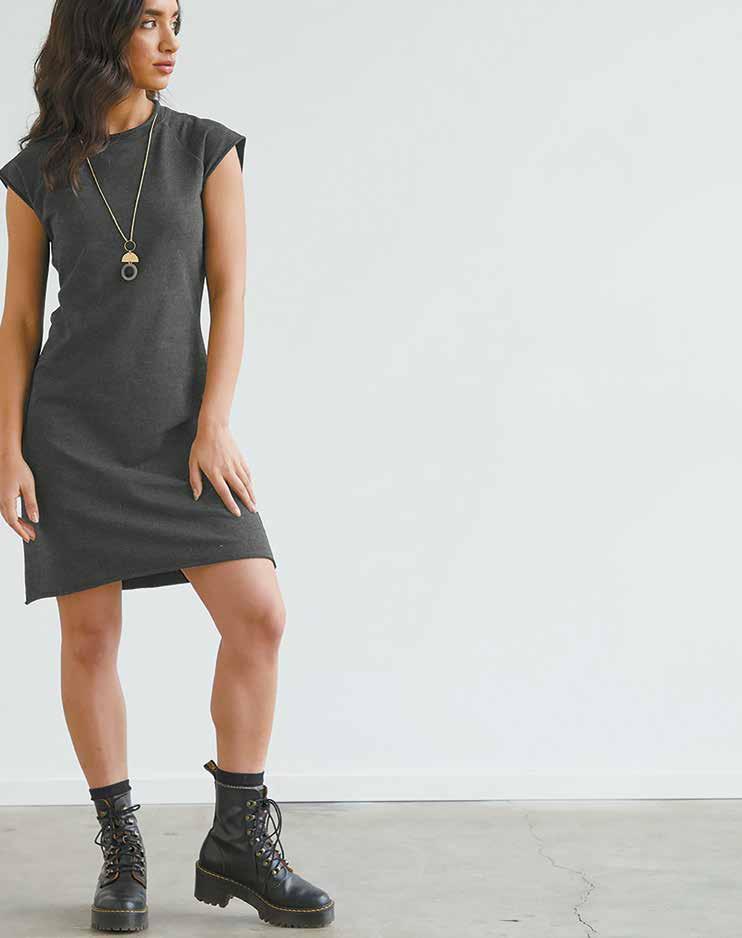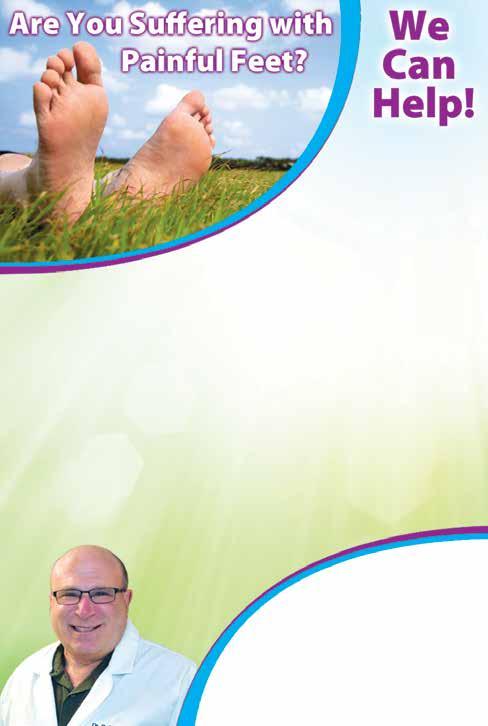
4 minute read
SUSTAINABLY STYLISH
Eco-Fashion that’s Kind to the Planet
The trendy “fast fashion” industry standard that originated in the early 1990s has had far-reaching effects that continue today. With a production turnaround time as short as four months, designer knock-offs made with inexpensive materials line the shelves of shopping centers throughout the world. But cheap textiles come with a hidden price tag.
According to the documentary The True Cost, consumers worldwide buy around 80 billion new items of clothing per year, a 400 percent increase from 20 years ago. A report by the UK-based Ellen MacArthur Foundation, which advocates a regenerative, circular economy, found that more than $500 billion in value is lost globally every year from rarely worn manufactured clothing and the lack of recycling. The greenhouse gas emissions from the production of these textiles total more than 1 billion metric tons per year, more than produced by international flights and maritime shipping combined.
Sustainable clothing is important for both the planet and those wearing the clothing, says Jeff Garner, a fashion designer in Franklin, Tennessee, who founded the eco-label Prophetik. “The worst effect is the washing of clothes. The synthetic fabrics and dyes come off in the laundry process and go into our groundwater and oceans, including the microplastics from polyester clothing.”
Jay Charlton, founder of the UK’s Viva la Vegan fashion brand, believes eco-friendly fashion does not have to be poorly produced or poorly designed. Nor does it mean choosing between a million different options, says Charlton, who found her passion for vegan-statement apparel after adopting a vegan diet. “One easy choice here is organic cotton over conventional cotton. While not perfect, it is better for the environment. Most organic cotton is produced under better working conditions for the farmers, too,” she says.
She also stresses the importance of reading labels to determine where clothes originate. “The next time you go shopping, seek out sustainable vegan fabrics and fair wear policies to do what’s right for the planet, people and our animal friends.”
Clothing from companies like Fair Indigo use more sustainable fabrics and ensure better lives for garment workers. image courtesy of FairIndigo.com
by Kajsa Nickels
Sustainable Yet Stylish
Just because something is safe for people and the planet doesn’t mean it can’t also be fashionable. Fair Indigo, located in Madison, Wisconsin, is a sustainable clothing company that specializes in garments made from organic Peruvian pima cotton. According to president and co-founder Robert Behnke, Peruvian pima cotton is prized for its longevity and durability. “We want to show the world that organic and sustainable does not have to be either too ‘crunchy’ or too trendy. The clothes that people wear every day—the clothes that make them feel comfortable— these are the brands that will have the greatest impact in truly changing the world.”
Fashion doesn’t have to be brand-new in order to be in style. Although secondhand clothing has been regarded negatively in the past by some, it has become more popular in recent years, especially during the COVID-19 crisis. Market researchers predict that resale clothing sales will increase 185 percent in the
next decade compared to 20 percent for fast fashion. Creative ways we can help reduce clothing waste while staying in style include the following: Clothing exchange parties. Friends and family members can swap clothes and non-sized items such as purses, hats and scarves in fun, socially distanced events. Creative mending. People that have extra time on their hands may like to learn a new skill. Also known as visible mending, creative mending includes freestyle stitching around holes and tears, and both beaded and Japanese shashiko embroidery. Repurpose into something new. If an item of clothing is beyond repair, it doesn’t have to be thrown away. Old T-shirts can be turned into blankets, pillowcases and even coin purses. Men’s dress shirts can be transformed into dresses for young girls or onesies for babies.

Kajsa Nickels is a freelance writer in Salisbury, Massachusetts. Contact her at Kajsa.BlueMountain@gmail.com.

Embrace plantbased workout clothes from companies like Viva la Vegan.
Homeopathic Solutions for Painful Feet
Alleviate Chronic Heel Pain
Get back in the action with Extra-Corporeal Shock Wave Therapy (ESWT). This FDA-Approved, non-invasive treatment excels for treating achilles tendonitis and plantar fasciitis commonly associated with heel spurs. It’s a painless, drug free solution with no lengthy recovery or risk of causing further injury.
Restore Healthy Toenails
The FDA Approved Cutera Laser eliminates embarrassing nail fungus and restores healthy toe nails. This quick in-office treatment is painless, has no downtime and does not require any medication. Get back to wearing your favorite open-toed shoes.
Traumeel is an innovative blend of natural botanical and mineral extracts with the ability to neutralize inflammation without side effects and treat a variety of musculoskeletal inflammatory conditions such as Achilles tendonitis, plantar fasciitis, capsulitis, metatarsalgia and arthritic conditions. Unlike cortisone, which has several side effects, Traumeel can be given as often as necessary to decrease pain and increase mobility.
If you are suffering with foot problems of ANY kind, Call Today and Schedule an Initial Exam and Consultation.
“Whatever your foot issues, let me take a look so together we can get them resolved.” Same Day Appointments for Urgent Matters
Robert J. Kaplan, D.P.M.
Board Certified in Foot and Ankle Specialist 1901 Hay Terrace, Easton
610-253-2251
www.TwinRiversPodiatryEaston.com




